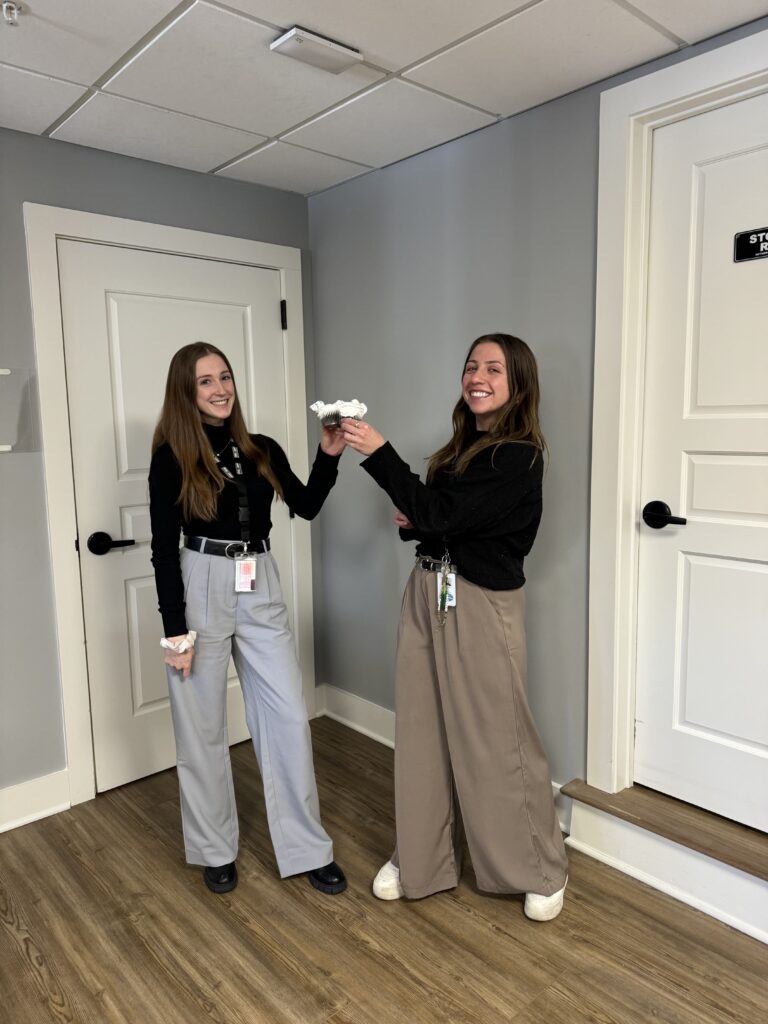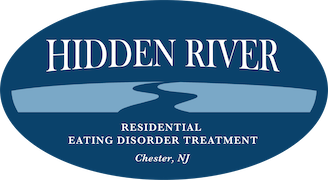Holly Greenberg, RD Discusses Our Nutrition and Culinary Skills Training Program
“It’s my goal to be able to help each patient find joy in food.”
Holly Greenberg, Lead Dietitian at Hidden River
The nutrition and culinary skills training program plays a central role for patients in Hidden River’s residential eating disorder treatment. We recently interviewed Holly Greenberg, RD, Lead Dietitian at Hidden River, to learn more about the program — which she developed and launched!
“Our team created the culinary skills program because we understand how important it is for our patients to have regular hands-on experiences with food through seeing, touching, smelling, tasting, and discussing it,” she shares. “The successful experience with food is about more than just eating it. The greater the exposure that patients have to food in all of its forms, the more opportunities they have to practice improving their coping skills. Plus, the culinary skills training program offers the education and experience that they will need when preparing meals at home, during college, or later in life.”
The nutrition and culinary skills training program includes five main tenets:
- Nutrition evaluation: First, the patient completes a comprehensive nutrition evaluation by a registered dietitian (RD).
- Individualized plan: They receive an individualized meal plan created by an RD and a physician. The meal plan is prepared by our in-house chefs and intends to aid in nutritional rehabilitation.
- Nutrition education: During their treatment, the patient partakes in supported meals and snacks, including exposure to appropriate food-related challenges.
- Nutrition counseling: The patient also participates in individual nutrition counseling one to two times per week as well as a weekly nutrition education group.
- Exposure Response Prevention (ERP): The patient works alongside an RD to practice real-world meal planning, which includes:
- developing a personal home-based meal plan of recipes they will consume
- attending a grocery shopping session to navigate the store and purchase needed ingredients
- receiving an orientation to a kitchen with all the regular amenities
- learning how to use, clean, and care for the appliances, dishes, and utensils
- cooking with an oven and stove top
As Lead Dietitian, Holly works alongside the treatment team to create nutrition-focused goals for the patients. She meets with the patients one time per week for an individual session and also teaches nutrition groups. Additionally, she eats meals with them several times each week to model proper meal etiquette. Lastly, she provides education to families on how to provide effective meal support to their daughter when they return home.
In terms of patient outcomes, the most common goal is to renew their hope for a better quality of life and to heal their relationships with food. These are great goals for so many reasons! “As young women, we all have such strong emotional ties to food. That’s because food is a social, emotional, and relational experience. It is so much more than fuel. It’s tradition, connection, celebration, and love,” says Holly. “When they can renew these meanings, it proves so beneficial to their treatment. It’s my goal to be able to help each patient find joy in food. I want them to experience hope for a better future.”

picture above: Kaeley Fiorentino and Holly Greenberg
An important part of the nutrition and culinary skills training program is Exposure Response Prevention therapy.
As Holly explains, “Exposure Response Prevention (ERP) is an experiential therapy designed to help people manage anxiety and develop emotional distress tolerance skills regarding their food fears.” The culinary skills program is designed to to effectively help the patient reduce fear surrounding all real-world experiences related to food from planning to preparing meals and then eating. The ERP program guides patients to resume foods they have eliminated due to their eating disorder as well as try new foods. Eating disorder recovery is particularly challenging because patients are faced with potentially debilitating trigger events every day, multiple times per day, whether it’s setting a menu, going to the grocery store, cooking diverse meals, or sitting down for a meal with their family.
“Because patients are in residential treatment for a relatively short amount of time, it is important that they learn practical everyday meal preparation skills so they can reduce their fears before they return home and encounter these normal daily life events again,” Holly shares. “A lot of our work with them during ERP sessions is to teach them how to use emotion-oriented, self-stabilization skills to manage their anxieties about food-related activities.”
A lot of Hidden River patients have made substantial progress in their recovery because of the Exposure Response Prevention program.
Holly shares the success story below:
“I had a patient who, upon admission, was fearful of eating mid-meal snacks and dairy. In fact, she was so fearful of snacks that, upon first arrival, she only came to the table for meals. We promptly developed and implemented a progressive ERP program to gently reintroduce snacks. We started with a small glass of juice, then over several days began to introduce her ‘safe’ foods.
Over a few weeks, she gained more confidence by using stabilization skills and was successful at introducing a broad range of snack foods. We used ERP to add small but increasing amounts of dairy as well. By the end of her treatment, some of her favorite snacks were cheese sticks and a periodic treat of ice cream. It was truly amazing the progress this patient made through the ERP nutrition program and her own personal effort to do the dedicated hard work for her recovery!”
Visit our website to learn more about eating disorder treatment at Hidden River. For a closer look at our grounds and living quarters, take a look at our gallery.






Leave a Reply
You must be logged in to post a comment.